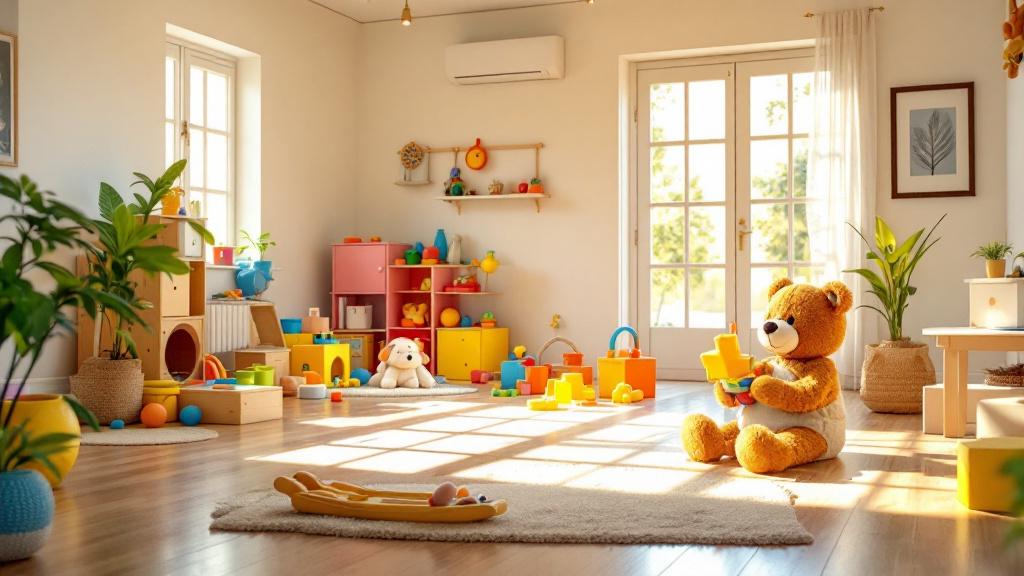When your child digs in their heels and refuses to participate in therapy, it can feel like you're stuck between a rock and a hard place. You know they need support, but forcing the issue often backfires spectacularly. Whether it's speech therapy, occupational therapy, or Applied Behavior Analysis (ABA), resistance to therapeutic interventions is more common than many parents realize.
The good news? There are proven strategies that can help transform your reluctant participant into an engaged learner. These approaches focus on understanding the root causes of resistance and addressing them with patience, creativity, and evidence-based techniques.
Understanding Why Children Resist Therapy
Before diving into solutions, it's crucial to understand that therapy resistance rarely stems from defiance alone. Children may refuse therapy for several valid reasons:
Overwhelm and Sensory Overload: Many therapeutic environments can feel overwhelming, especially for children with autism, ADHD, or sensory processing differences. Bright lights, unfamiliar sounds, and new textures can trigger fight-or-flight responses.
Loss of Control: Therapy often involves adults directing activities and expectations. For children who already feel powerless in many areas of their lives, this can feel like another situation where their autonomy is stripped away.
Past Negative Experiences: A single uncomfortable or frightening therapy session can create lasting associations. Children have excellent memories for situations that made them feel unsafe or misunderstood.
Communication Barriers: Sometimes children can't articulate what's bothering them about therapy. They may have specific fears or concerns that adults haven't identified or addressed.
Mismatch with Learning Style: Traditional therapy approaches don't work for every child. Some need more movement, others need quieter environments, and many need different types of motivation than what's typically offered.
Strategy 1: Start with Choice and Control
One of the most effective ways to reduce therapy resistance is to give children meaningful choices within the therapeutic framework. This doesn't mean letting them opt out entirely, but rather providing options that honor their autonomy while still meeting therapeutic goals.
Implement Choice Boards: Create visual boards showing different therapy activities or approaches. Let your child choose which activity to do first, which materials to use, or which reward they'll work toward. Even small choices can significantly impact their sense of control.
Offer Timing Options: Instead of "We're doing therapy now," try "Would you like to do your therapy activities before or after snack time?" This simple reframing transforms a demand into a collaborative decision.
Create Break Systems: Establish clear systems where children can request breaks or communicate when they're feeling overwhelmed. This might involve break cards, hand signals, or designated quiet spaces they can access.
The key is ensuring choices are real and meaningful, not just the illusion of choice. When children feel they have some control over their therapeutic experience, resistance typically decreases dramatically.
Strategy 2: Make It Fun and Engaging
Traditional therapy models often prioritize clinical objectives over engagement, but research consistently shows that children learn best when they're enjoying themselves. This is where ABA motivation techniques become particularly valuable.
Gamification Approaches: Turn therapy goals into games, challenges, or adventures. Speech therapy becomes a treasure hunt for sounds, occupational therapy transforms into obstacle courses, and social skills practice happens through role-playing favorite characters.
Interest-Based Learning: Incorporate your child's special interests into therapy sessions. If they love dinosaurs, use dinosaur figures for counting, storytelling, and social scenarios. If they're fascinated by trains, create therapy activities around train schedules, maps, and problem-solving scenarios.
Collaborative Goal Setting: Include children in setting their own therapy goals using language they understand. Instead of "improve fine motor skills," the goal might become "get better at using chopsticks like a ninja."
Celebration and Recognition: Create meaningful ways to acknowledge progress and effort, not just outcomes. This might involve progress charts they help create, special privileges they earn, or simply verbal recognition that focuses on their hard work rather than just results.
Strategy 3: Address Sensory and Environmental Factors
Many therapy environments are designed for adult convenience rather than child comfort. Making thoughtful environmental modifications can eliminate many sources of resistance before they begin.
Sensory Accommodations: Dim harsh lighting, provide noise-canceling headphones, offer fidget tools, or create cozy spaces with soft textures. Some children need movement breaks, while others need compression or weighted items to feel regulated.
Predictability and Structure: Use visual schedules, social stories, or written explanations to help children understand what will happen during therapy. Knowing what to expect reduces anxiety and increases cooperation.
Safe Spaces: Ensure there's always a designated calm-down area where children can retreat if they become overwhelmed. This space should be comfortable and non-punitive.
Timing Considerations: Pay attention to when your child is most receptive. Some children do better in the morning when they're fresh, while others need time to warm up to social interactions later in the day.
Strategy 4: Build Strong Therapeutic Relationships
The relationship between child and therapist often matters more than specific techniques or interventions. When children feel genuinely understood and cared for, they're much more likely to engage in challenging work.
Person-First Approach: The most effective therapists see the whole child first, not just the diagnosis or areas needing improvement. They take time to learn about the child's interests, fears, strengths, and communication style.
Trust-Building Activities: Before jumping into formal therapy goals, spend time on relationship-building activities. This might involve playing preferred games, having conversations about their interests, or simply sitting together quietly.
Validation and Understanding: Acknowledge when therapy is hard work and validate their feelings about the process. Statements like "I can see this is frustrating for you" or "You're working really hard on something that's challenging" go a long way.
Collaborative Problem-Solving: When resistance occurs, involve the child in figuring out solutions. Ask questions like "What would make this easier for you?" or "How can we make this work better?"
Organizations like Heartwise Support understand the importance of these relationship-based approaches in their ABA therapy programs, recognizing that connection often precedes cooperation.
Strategy 5: Involve the Entire Family System
Therapy doesn't happen in isolation. The most successful outcomes occur when the entire family understands and supports the therapeutic process. This is where family training becomes crucial.
Parent Education and Training: Parents need to understand not just what their child is working on, but why these skills matter and how to support practice at home. This includes learning how to use positive reinforcement effectively, create supportive environments, and recognize signs of overwhelm.
Sibling Involvement: Brothers and sisters can be powerful allies in the therapeutic process when they understand what's happening and how they can help. They often provide natural opportunities for social skill practice and peer modeling.
Consistency Across Settings: Work with therapists to ensure strategies and approaches are consistent between therapy sessions and home life. Mixed messages or conflicting approaches can increase confusion and resistance.
Regular Communication: Maintain open lines of communication with your child's therapeutic team. Share what's working at home, what challenges you're seeing, and any changes in your child's behavior or needs.
Home Practice Integration: Rather than adding therapy homework to your family's already busy schedule, look for ways to integrate therapeutic goals into daily routines naturally. Practice speech sounds during car rides, work on fine motor skills through cooking activities, or address social skills during family game nights.
Working with Professional Support
Sometimes, despite your best efforts, professional guidance is necessary to navigate therapy resistance effectively. This is particularly true when children have complex needs or when resistance persists despite implementing multiple strategies.
ABA Therapy Considerations: Applied Behavior Analysis can be particularly helpful for children who struggle with therapy engagement because it focuses on understanding the function of behavior and creating individualized motivation systems. Quality ABA programs emphasize positive reinforcement, choice-making, and building on children's natural interests.
Therapeutic Team Collaboration: The best outcomes happen when speech therapists, occupational therapists, ABA providers, and other professionals work together rather than in isolation. This collaborative approach ensures consistency and prevents overwhelming children with competing demands.
Regular Progress Review: Schedule regular meetings with your therapeutic team to assess what's working and what isn't. Be prepared to advocate for changes in approach if current strategies aren't effective.
Support organizations can provide valuable resources during this process. Heartwise Support offers both professional ABA therapy services and family support resources that can help parents navigate these challenges more effectively.
Red Flags: When to Reassess Your Approach
While some initial resistance to therapy is normal, certain signs indicate it's time to step back and reassess your approach:
- Persistent distress that doesn't improve over several weeks
- Regression in other areas of development or behavior
- Physical symptoms of anxiety or stress related to therapy
- Complete shutdown or refusal to engage despite multiple strategy attempts
- Damage to the parent-child relationship due to therapy conflicts
If you notice these signs, it's not a failure on your part or your child's. It simply means the current approach isn't the right fit, and modifications are needed.
Moving Forward with Patience and Hope
Helping a child overcome therapy resistance requires patience, creativity, and often a willingness to think outside traditional approaches. Remember that resistance usually communicates an unmet need rather than defiance.
Every child is unique, and what works for one may not work for another. Be prepared to try multiple strategies, modify approaches based on your child's responses, and maintain open communication with your therapeutic team throughout the process.
The goal isn't just compliance with therapy activities, but helping your child develop a positive relationship with learning, growth, and receiving support when they need it. These skills will serve them well throughout their lives, far beyond their current therapeutic needs.
With the right strategies, support, and patience, most children can learn to engage productively with therapeutic interventions. The journey may not always be smooth, but the destination—a child who feels capable, supported, and ready to tackle new challenges—makes every effort worthwhile.
For additional support and resources on family training approaches and ABA motivation techniques, families can explore professional guidance and connect with other parents facing similar challenges through organizations that specialize in comprehensive family support.











